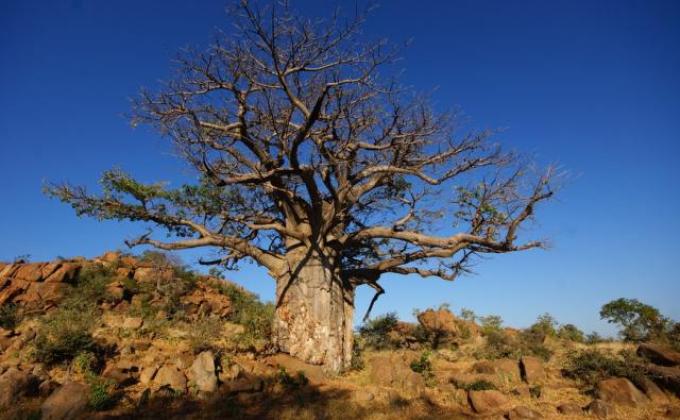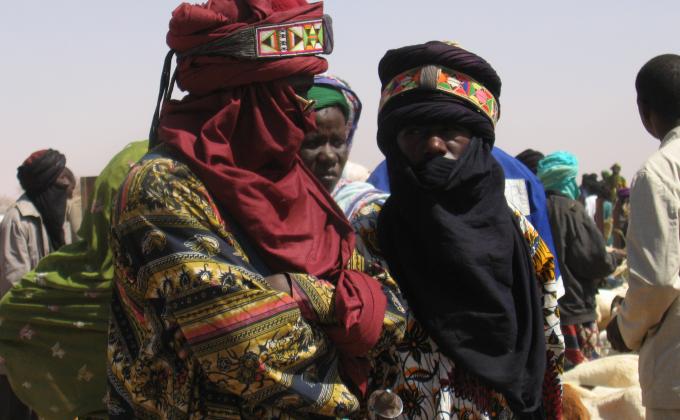Introduction
For over a decade, the Sahel region has been confronted with the presence of al-Qaeda and Islamic State-affiliated organisations, various non-state armed groups, and communal militias, and has continued to witness ever increasing levels of violence. Burkina Faso, Mali, and Niger were all among the ten countries having recorded the largest increases in deaths from terrorism worldwide in 2021, with deaths having risen by over one thousand percent since 2007. Since the breakout of the Malian crisis in 2012, communities living in affected regions, and their local leaders have increasingly been caught between terrorist violence and counter-terrorism operations.
In this context, customary authorities - including traditional leaders such as village chiefs, and religious figures such as imams or marabouts (Muslim holy men often believed to have healing powers) - have found themselves in a particularly delicate position – being trapped, “between the state and the extremist movements, with both parties suspecting them of supporting [the other].” Regarded by violent extremist groups as rival governance actors with connections to central governments, customary authorities have been targeted by terrorists’ propaganda and violence. This threat has led some leaders to flee, while those who stayed have been forced to abide by terrorists’ rules, with local negotiations having at times allowed for some compromises. While such local bargains might raise states’ suspicions towards traditional authorities, these actors may also represent useful partners in the fight against violent extremism given their proximity with local populations, and their relative legitimacy. Playing this role of intermediaries between the community and the state, and collaborating with security forces and officials, however puts them at further risk.
In the past two years, the International Centre for Counter-Terrorism (ICCT), in collaboration with the Clingendael Institute’s Conflict Research Unit, has conducted research to unravel some of these complex dynamics. Through extensive quantitative and qualitative data collection in six different regions throughout Burkina Faso, Mali and Niger, the USAID Customary Resilience project has aimed to increase the understanding of customary authorities’ contributions to strengthening and/or weakening community resilience to violent extremism. Placing the project’s research findings and recommendations in context, this perspective seeks to provide a concise overview of the types of interactions between customary authorities and terrorist organisations in the Sahel. It also considers the challenges raised, and implications for programming that aim to engage traditional and religious authorities in supporting the prevention and countering of violent extremism (P/CVE) efforts throughout the region.
Criticised within Extremist Narratives
Denouncing local authorities' governance, including criticising traditional and religious authorities for their privileges, corrupt practices, and unequal treatment of certain segments of the community, has been at the core of some terrorist groups’ strategies to gain community-level support in the Sahel. In Central Mali, jihadist group Katiba Macina’s leader Amadou Koufa has thrived on a narrative that questions the prevailing social order and traditional norms in place. Among other levers, this discourse has notably intended to instrumentalise feelings of injustice and discrimination, and grievances against administrative and traditional authorities, in order to recruit among marginalised segments of communities, including among Fulani youth. In this context, it seems that the “desire for social advancement inspires some of the recruits.”
In Burkina Faso’s Soum province, Malam Ibrahim Dicko, founder of the extremist group Ansarul Islam, has similarly preached “anti-establishment discourse” on local radio stations. He has used his sermons to denounce “marabout families for enriching themselves by using their status of sole legitimate holders of religious authority to extort money from the population …[and] the all-powerful nature of traditional chefferies (traditional leaders).” He has moreover questioned the rigid social order that structures communities in the province, which he contends have “disproportionately benefitted traditional chiefs and religious leaders at the expense of the general population”. His group has thereby attracted support among the youth, and the most disadvantaged segments of communities.
As seen in many contexts, for certain fringes of society, joining violent extremist groups may thus represent “a way of contesting the traditional forms of governance supported by the state apparatus.” However, understanding this dynamic is crucial to grasp the challenges at stake when it comes to traditional and religious authorities’ governance styles, and especially so in ensuring inclusiveness and equal treatment for all community members. As demonstrated by the USAID Customary Resilience research, these are among the main factors conditioning customary authorities’ ability to positively influence community resilience.
Targeted by Extremist Violence
More than just criticising traditional norms and actors to serve their recruitment strategies, terrorist groups have directly targeted these actors. Since the outbreak of the Malian crisis in 2012, local community leaders have been primary targets for terrorist organisations, but recent years have recorded particularly worrying trends in this regard. While around twenty leaders had been targeted as of early 2018, it is estimated that “at least 300 community leaders, state officials and family members” were assassinated or abducted since then. Furthermore, such incidents – in addition to their direct victims – have led many other chiefs to flee rural areas to seek refuge in larger urban centres, leaving populations even more vulnerable to terrorist groups’ violence.
Violent extremist organisations have different interests in targeting local chiefs and religious authorities. As previous research conducted in Central Mali found, their primary motivation certainly consists in getting rid of local opponents and government rivals, with customary leaders having been “killed principally for resisting, refusing to collaborate with, be recruited by or support the cause of a radical armed group in the region … [and] for allegedly collaborating or being affiliated with the state’s security forces.” Assassinations of local leaders may also represent “a warning to the wider community of the targeted traditional authority,” spreading fear by demonstrating that even its most important members can be targeted. Not only does killing customary authorities suppress key informants to government authorities, but it has the potential to further discourage broader communities from cooperating with state forces and representatives.
By depriving central governments of the possibility to rely on “the support of local chiefs and traditional tribal hierarchies to consolidate (albeit indirectly) the state’s grip in their respective peripheral regions,” targeting local leaders may severely alters states’ influence over remote areas. The absence of local leaders in turn creates a vacuum for groups’ imposition of Islamist governance. It notably deprives communities from the principal mediators of local disputes and conflicts, thereby creating a risk of further destabilisation by seeing more intercommunal tensions arise.
Living under Terrorism: Co-optation, Coercion, or Negotiation
For those traditional leaders who have decided to stay in their communities, very few options remain available. There have reportedly been some instances of terrorist organisations’ attempting to co-opt traditional leaders in order to secure themselves some local support, “trying to manipulate and control the actions of traditional authorities in their favour, and through them extend their influence over the population.” Local community leaders approached by Islamist groups are left with limited room for manoeuvre, given the serious threats they face in case of non-compliance: “those who have stayed are obligated to collaborate with the extremist armed movements [...] in order to preserve their lives and those of their families.”
Among violent extremists’ orders have, for instance, been the obligation for customary authorities to levy a religious tax (zakat), on behalf of the jihadists – according to interviews conducted in Tillabéri region as part of the Customary Resilience project. Similarly, local testimonies indicate that in some regions of Central Mali, “state officials have not collected taxes for years in certain locations of Central Mali.”
Finally, Islamist militants in some cases “took the executive power from the traditional authorities.” They have sometimes replaced the traditional role customary leaders play in settling local disputes to provide justice themselves and have often become involved in the management of land and natural resources. While traditional power structures had already been put in question by “decentralisation policies and the promotion of agriculture at the expense of pastoralism,” the Katiba Macina further challenged the power of Central Mali’s traditional land owners, called the jowros. Koufa’s group halted and/or significantly lowered the fees collected by the jowros from herders to access pasturelands, with some sources even indicating that militants might have played a role in managing livestock migration corridors.
In order to reduce violence and gain some concessions from violent extremist groups, some traditional leaders have reportedly entered into local negotiations. Some of these grassroots dialogues have resulted in local deals allowing for forcibly displaced people to return back in their communities, for more freedom of movement being granted - including for women to travel to rural markets, for the reopening of schools, and the lifting of blockades imposed by terrorist groups in some villages. However, local negotiation efforts do not always allow for such compromises to be found. There is indeed an unequal balance of power, with local leaders “hav[ing] little to offer powerful jihadists, who extend small security concessions in exchange for local populations abiding by strict Islamic codes.”
In turn, the willingness of some traditional leaders to negotiate with violent extremist groups—or even merely remaining in areas where violent extremists are present—has led to some “incurring […] the suspicions of the state”, who view them as potential collaborators. While some governments in the region have quietly opened the door to negotiations with some groups, like Mali’s tentative foray into negotiations with the al Qaeda-affiliated JNIM, negotiations as a whole remain unsanctioned, causing many traditional leaders to fear retaliation from the central government. This has left many traditional leaders caught between an impossible rock and a hard place, as security in their communities further deteriorates.
Contributing to Countering Terrorism Efforts
Traditional and religious authorities might however represent useful contributors to P/CVE efforts in remote regions of the Sahel, where they often are the last governance actors present. Customary authorities, particularly in rural areas, are historically the primary set of actors that citizens turn to when it comes to resource management and conflict resolution. Through mediation techniques, village chiefs and other traditional leaders contribute to resolving disputes at the local level, including low-intensity conflicts over land and natural resources. As these agropastoral tensions have been instrumental for violent extremist groups to recruit and gain support, their role in de-escalating such conflicts might contribute to countering terrorist influence.
Customary dispute resolution, which is based on dialogue and consensus, is considered more protective of social cohesion than state justice, which “creates two enemies, often irreconcilable, with one being right and the other wrong.” Traditional conflict resolution mechanisms however present some limits, with the decision of traditional authorities being frequently contested. Customary authorities “lack enforcement powers [and] cannot legally compel disputants to implement their decisions,” weakening their potential impact in this realm. Thus, as tensions grow over increasingly scarce resources—with climate change exacerbating agropastoral conflicts—traditional authorities can only do so much to mitigate conflict. Their potential impact is further limited because their dispute resolution mechanisms are “based on principles such as communal ownership of land that discriminate against the youngest or most vulnerable, like migrants and women.” Moreover, the effectiveness of traditional conflict resolution has been increasingly hampered by the violent forms that local conflict dynamics have taken on in recent years. As traditional leaders’ competencies do not extend to conflict involving physical violence, their capacity to resolve increasingly lethal farmer-herder conflicts has significantly decreased. It is thus rather “the preventive aspect of traditional conflict management mechanisms that seems to be their main strength.”
Customary leaders have at times also contributed to local security provision, through information-sharing, collaboration and monitoring of ‘foreign’ elements. Some customary leaders have mobilised, such as through the “Call of Manega” made in June 2019 by various traditional and religious leaders, along with former military officers and political figures, to find solutions to restore peace and social cohesion in Burkina Faso. There have also been instances of consultation of customary leaders at the national level and regional level to better understand the situation on the ground, and the local needs in the face of violent extremism. Despite their potential contributions to security provision, traditional and religious authorities should moreover not be regarded as security actors themselves. Co-opting traditional leaders as security actors could further erode their legitimacy as influential actors in the community by spreading the perception that they are working with security and military forces, which themselves have committed serious and repeated violations against civilian populations.
Governments and partners should thus adopt a careful approach to cooperation with traditional and religious authorities, taking into account the risks they face. They need protection and should not be expected to perform roles that are outside of their traditional functions, including identifying and reporting about militants’ positions to the security forces, as such collaboration may put them at greater risk. Furthermore, local security mechanisms and initiatives may also have negative side effects when they take on violent forms, such as the creation of self-defence militias, which have contributed to worsening intercommunal tensions.
Conclusion
As the crisis in Mali reaches its tenth year, the security situation throughout the Sahel has continued to deteriorate, with instability now spreading even further, including to the Littoral states on the coast of West Africa. With France and other European countries scaling down their involvement in the region, in no small part due to the series of executed and attempted political coups that have been witnessed in Mali, Burkina Faso, and Niger, a solution for halting the advance of violent extremist groups in the region remains elusive. In the middle of this complex dynamic, traditional authorities may suffer doubly - first, from being targeted as figures of ire by terrorist groups, and then as figures of suspicion by security forces who question these authorities’ allegiances.
Ultimately, traditional authorities are unlikely to be able to serve as any sort of panacea for the ails of the region. The bigger puzzle will require a comprehensive approach that addresses the embedded, structural drivers of violent extremism across the region, including longstanding inter-ethnic tensions, increased pressure over limited resources, poor governance, and abuses by state security forces. Yet, within a limited context they may be able to play a role, particularly in preventing the spread of violent extremism through improved social cohesion. For populations faced with lasting terrorist presence – and state absence – local community leaders often represent the last set of actors they can count on. In order to reinforce their contributions to community resilience, traditional and religious authorities’ governance should however be inclusive, and transparent enough to avoid further feeding violent extremists’ narratives.
This publication represents the views of the author(s) solely. ICCT is an independent foundation, and takes no institutional positions on matters of policy unless clearly stated otherwise.
Photocredit: Harmattan Toujours/Shutterstock









